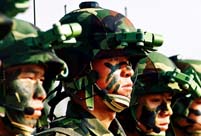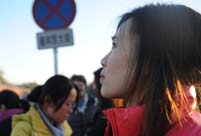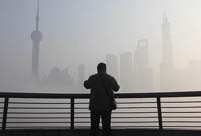China is currently setting up 18 free trade areas involving 31 different countries and supra-national groups, said Yao Jian, spokesman for the Ministry of Commerce (MOC) last Thursday, during a press conference on the theme of "the establishment of FTAs".
Among the current batch of agreements, China has signed 12 free trade agreements (FTA) with countries and regions including the ASEAN, Singapore, Pakistan, New Zealand, and Chile, a Closer Economic Partnership Arrangement (CEPA) between the Mainland and Hong Kong, and an Economic Cooperation Framework Agreement (ECFA) between the Mainland and Taiwan. With the exception of the FTAs between China and Iceland and China and Switzerland, which have not yet become effective, the other ten FTAs have been implemented.
In addition, another six FTAs are under negotiation. These are between China and the ROK, China and the Gulf Cooperation Council, China and Australia, and China and Norway. There are also the China-Japan-ROK FTA and the Regional Comprehensive Economic Partnership (RCEP) between the 10 ASEAN Member States and its FTA partners, including China, Australia, India, Japan, ROK and New Zealand.
At present, China is considering building its next Free Trade Zone (FTZ) following the establishment of the Shanghai FTZ, said Yao Jian. It is understood that a number of provinces or cities including Guangdong Province, Shandong Province, Jiangsu Province, Xiamen City and Tianjin Municipality, have put forward their plans for FTZs.
An FTA is different from an FTZ
There are differences and similarities between the Shanghai FTZ and the free trade areas. The FTZ in Shanghai is also called a special economic zone or free economic zone, and has been set up to facilitate trade and investment for enterprises operating in the zone.
A free trade area, on the other hand is a bloc whose member countries or regions have negotiated and signed a free trade agreement (FTA). Under the agreement, they enjoy mutual benefits. But there are similarities between the FTA and the FTZ. For example, some tentative policies proposed for the FTZ also address issues encountered by countries involved in negotiating an FTA. So if these policies can be applied to companies in the FTZ, they will be extended to the free trade areas.
Edited and translated by Liang Jun, People's Daily Online
 Heavy cargo flights taking off
Heavy cargo flights taking off In pictures: PLA's digital equipment
In pictures: PLA's digital equipment  Americans mark Thanksgiving Day with parades
Americans mark Thanksgiving Day with parades Love searching stories in cities
Love searching stories in cities  Shanghai shrouded in heavy fog
Shanghai shrouded in heavy fog Office ladies receive ‘devil’ training in mud
Office ladies receive ‘devil’ training in mud China's first nude photographer
China's first nude photographer Selected sports photos of the week
Selected sports photos of the week Treasure of Chinese culture- Nuo Dance
Treasure of Chinese culture- Nuo Dance  Youths in Night club: photo story
Youths in Night club: photo story Models dazzle at Int'l Yacht Model Pageant
Models dazzle at Int'l Yacht Model Pageant  Crystal scenery in China: Jilin fog glaze
Crystal scenery in China: Jilin fog glaze  Tianjin holds first pole dance championship
Tianjin holds first pole dance championship  Annual Santa Claus parade held in Canada's Montreal
Annual Santa Claus parade held in Canada's Montreal China's aircraft carrier passes through Taiwan Strait
China's aircraft carrier passes through Taiwan StraitDay|Week|Month